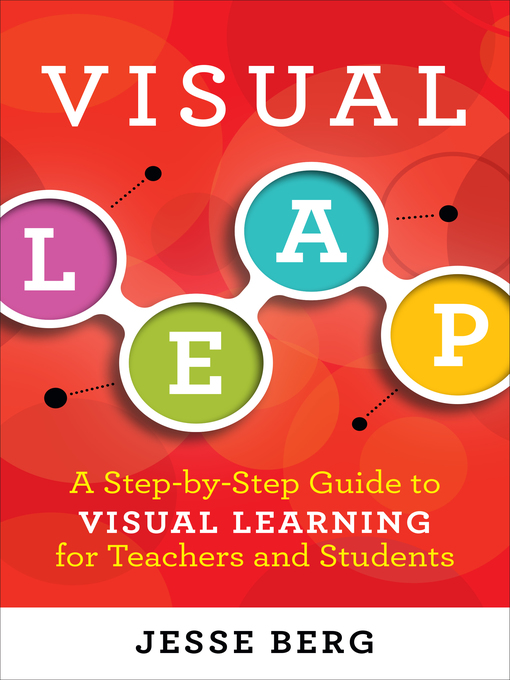The Visual Leap method simplifies teaching the skills of the Common Core State Standards and gives teachers explicit ways to differentiate instruction to meet the needs of all learners. The strategies work across many grade levels and subject areas and for a wide variety of instructional objectives across the curriculum, such as vocabulary acquisition, reading comprehension, writing, speaking, and listening.
Visual Leap offers easy ways to foster dynamic, creative, and critical thinking in the classroom, and provides teachers and students with a toolkit of problem-solving and learning strategies designed to serve them throughout their academic and professional lives.
-
Creators
-
Publisher
-
Release date
October 6, 2015 -
Formats
-
OverDrive Read
- ISBN: 9781942108085
- File size: 7217 KB
-
EPUB ebook
- ISBN: 9781942108085
- File size: 7217 KB
-
-
Languages
- English
-
Reviews
-
Library Journal
September 15, 2015
Teacher and educational speaker Berg offers convincing evidence that the visual learning strategy of webbing is a useful pedagogical tool. Drawing upon his own struggles in school, Berg contends that visual learning is the best way to tap into the needs of both hemispheres of the brain so that substantial learning can happen. An introduction to visual inquiry leads into a discussion of the demands of visually oriented learners, and from there Berg breaks down the process of webbing into concrete steps to help teachers understand how it can be effectively used in the classroom. The text concludes with an outline of additional graphic organization techniques. There is little doubt Berg's contention is true--visual learning strategies are powerfully connected to the way the brain works. However, his focus on only graphic organizers fails to show the true richness of the wide range of visual learning strategies, so much so that for a full understanding teachers may need to go to other texts such as Philip Yenawine's Visual Thinking Strategies. VERDICT For teachers who want an introductory look at graphic organizers and are willing to extend their learning about visual inquiry into other sources.--Rachel Wadham, Brigham Young Univ. Libs., Provo, UT
Copyright 2015 Library Journal, LLC Used with permission.
-
School Library Journal
January 1, 2016
A discussion of learning strategies to help students think independently, creatively, and critically, while improving listening and reading comprehension. The author begins by describing his own personal learning difficulties and goes on to discuss the research on left brain and right brain functions and the differences between audio-sequential and visual-spatial learning. Visual thinking is said to be innate even with Braille users, and it is this idea that is emphasized, while Berg also recognizes the importance of auditory learning. In order to tackle a subject fully-whether it is brainstorming a topic in collaboration with others, writing a paper, taking notes, planning a speech, or simply making personal plans-Berg recommends the processes of webbing, mapping, and web-storming. These strategies make use of linear and nonlinear thinking and are described in detail with accompanying black-and-white diagrams and personal anecdotes. Readers will appreciate familiar examples that include the Common Core standards, well-known children's literature titles such as Louis Sachar's Holes (Scholastic, 1988), and common history topics such as the Civil War. A useful resources section lists further reading and websites. Chapter notes are provided as well. VERDICT Teachers and students will find unique learning and teaching strategies well worth considering.-Jackie Gropman, formerly at Chantilly Regional Library, VA
Copyright 2016 School Library Journal, LLC Used with permission.
-
Loading
Why is availability limited?
×Availability can change throughout the month based on the library's budget. You can still place a hold on the title, and your hold will be automatically filled as soon as the title is available again.
The Kindle Book format for this title is not supported on:
×Read-along ebook
×The OverDrive Read format of this ebook has professional narration that plays while you read in your browser. Learn more here.


